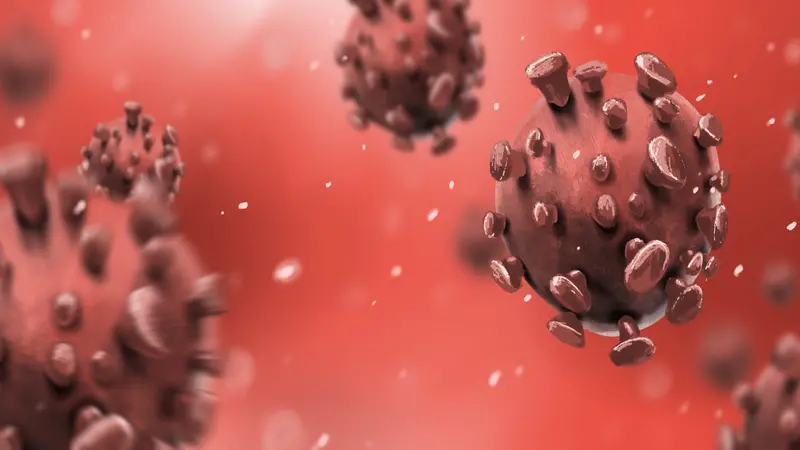

Planet and People Connection

Planet and People Connection
Should Scientists Be Allowed To Enhance Pandemic Pathogens?
By 2014, the H5N1 avian flu killed 386 people worldwide. While serious, the number of casualties is by no means earthshaking—until one realizes that the total number of people infected was only 650. The fatality rate was a staggering 60%. When compared to COVID-19’s fatality estimates of around 1% (Sullum, 2021), the earth indeed begins to tremble.
Fortunately, that strain of avian flu does not pass easily between people. The 650 cases were spread out over 11 years. Those who became sick typically spent a lot of time among infected birds. But in experiments that created shockwaves among the scientific and medical communities nearly a decade ago, teams of researchers in The Netherlands and China each created airborne versions of H5N1.
One might try to discount the serious risk of that flu, as it has never been responsible for a real-world pandemic. But the Spanish flu has. It took the lives of about 50 million people in 1918. In June 2014, scientists at the University of Wisconsin-Madison announced that they had recreated an airborne version of that deadly virus.
Critics who labelled the experiment “crazy, dangerous” (Sample, 2014) found bone-chilling support within a month, when two of the most prestigious pathogen labs in the world were forced to close after serious accidents. The Centers for Disease Control’s Anthrax and Flu Labs in Atlanta allegedly exposed at least 62 employees to anthrax. In addition, a benign flu sample was contaminated with the extremely deadly H5N1 avian flu (Center for Disease Control and Prevention, 2014). To top off a week of lab horror stories, 16 live vials of smallpox were discovered in an [National Institutes of Health] lab, which had been unknowingly stored there for at least 60 years (Sun, 2014).
These were just three of more than 1,000 reported incidents at pathogen labs around the world (Szabo, 2014). The concept of secure containment turns out to be a fallacy. The world just gained an appreciation of what is truly at stake if dangerous microorganisms and viruses begin to infect. Even with its relatively low fatality rate, the COVID-19 pandemic impacted nearly every aspect of human civilization. What conditions, therefore, justify what is known as gain-of-function research, i.e., enhancement of potentially pandemic pathogens?
Gain-of-function research represents a narrow field of experimentation. It seeks to identify the genetic sequences of pathogens responsible for a particular trait, most commonly human-to-human transmission. Given the specialized nature of this research, the considerable cost imposed by biosafety measures, and the inherent risks of working with deadly pathogens, gain-of-function research is rare and conducted in only about a dozen labs in the U.S.
When considering whether the research is justified, there are at least three key factors to consider:
- the potential risk of accidental release of the pathogen;
- the benefits of this research and the value of the information it provides; and
- the existence of alternative low-risk methods to obtain the same information.
The risks are significant: several researchers who have conducted analyses suggest that the accumulated risk of an accidental release over long periods becomes unacceptably high (Klotz, 2014; Lipsitch, 2014a). Although these reports have been criticized for overestimating the risks (Fouchier, 2015), biolabs tend to underreport incidents (Kimman, 2008), making it necessary to adjust the risk of accidental release upwards.
Rationale for enhancing pathogens in laboratories includes gaining an advanced understanding of what mutations might naturally develop that could make them more dangerous to our health or more easily transmitted. This knowledge would theoretically contribute to ongoing surveillance, detection, and prediction of pathogens, and better equip the scientific and medical community in treatment and response. These and other supposed benefits of gain-of-function research have been challenged (Lipsitch, 2014a; Lipsitch, 2014b).
Critics point out that the laboratory experiments may not accurately predict real-world scenarios. For example, this research typically uses animals such as ferrets as stand-ins for humans. They assume that if pathogen transmission occurs between ferrets, it will likely also occur in humans. However, the actual results of gain-of-function experiments have been mixed. Sometimes mutations leading to transmission in animal models made the pathogen less dangerous in humans. In other cases, pathogens were transmitted between humans even without the specific mutations that gain-of-function experiments predicted would be necessary (Langlois, 2013).
Even if gain-of-function research could identify the mutations needed for a natural virus to become a pandemic threat, experts question whether that information could practically prevent one. So far it hasn’t. This calls into question the usefulness of gain-of-function research.
Finally, other methods can obtain the same or similar information provided by the gain-of-function research (Lipsitch, 2014b). Although these methods require more development, they carry none of the risks associated with gain-of-function pathogen research. During a 2015 symposium on the topic, it was suggested that one “can develop safer approaches to do these types of experiments; it just needs a little bit of imagination on the part of researchers.” (National Research Council, 2015)
"[A] ban on gain-of-function research makes sense: it prevents risks associated with this research while providing an impetus for the advancement of safe alternatives."
With significant risks of an accidental release over the lifetime of a lab, which can be several decades, the potential for catastrophic consequences should a release occur, the relatively limited benefits of the research, and the possibility of using other methods with none of the risks, gain-of-function research clearly does not pass the risk-benefit analysis.
Therefore, a ban on gain-of-function research makes sense: it prevents risks associated with this research while providing an impetus for the advancement of safe alternatives. Passing such laws is a natural consequence of COVID-19, where the impact of a pandemic continues to reverberate around the world. The laws will not, of course, prevent all future pandemics. But if they stop scientists from creating and storing potential pandemic pathogens such as airborne versions of the H5N1 flu and the Spanish flu, the laws will certainly lower the risks for humanity.
REFERENCES
Center for Disease Control and Prevention. (2014, July 11). CDC Director Releases After-Action Report on Recent Anthrax Incident; Highlights Steps to Improve Laboratory Quality and Safety. https://www.cdc.gov/media/releases/2014/p0711-lab-safety.html
Fouchier R. 2015. Studies on influenza virus transmission between ferrets; the public health risks revisited. mBio 6(1):e02560-14. http://dx.doi.org/10.1128/mBio.02560-14.
Kimman TG, Smit E, Klein MR. 2008. Evidence-based biosafety: a review of the principles and effectiveness of microbiological containment measures. Clin Microbiol Rev 21:403– 425. http://dx.doi.org/10.1128/CMR.00014-08.
Klotz, L.C. and Sylvester, E.J., 2014. The consequences of a lab escape of a potential pandemic pathogen. Frontiers in public health, 2, p.116.
Langlois, R., R., A. Albrecht, B. Kimble, T. Sutton, J. S. Shapiro, C. Finch, M. Angel, M. A. Chua, A. S. Gonzalez-Reiche, K. Xu, D. Perez, A. Garcia-Sastre, and B. R. tenOever. 2013. MicroRNA-Based Strategy to Mitigate the Risk of Gain-of-Function Influenza Studies. Nature Biotechnology. Available at: http://www.nature.com/nbt/journal/v31/n9/full/nbt.2666.html.
Lipsitch M, Inglesby TV. 2014a. Moratorium on research intended to create novel potential pandemic pathogens. mBio 5:e02366-14. http://dx.doi.org/10.1128/mBio.02366-14.
Lipsitch, M. and Galvani, A.P., 2014b. Ethical alternatives to experiments with novel potential pandemic pathogens. PLoS Med, 11(5), p.e1001646.
National Research Council, 2015. Potential risks and benefits of gain-of-function research: summary of a workshop. National Academies Press
Sample, I. (2014, June 11). Scientists condemn ‘crazy, dangerous’ creation of deadly airborne flu virus. The Guardian. https://www.theguardian.com/science/2014/jun/11/crazy-dangerous-creation-deadly-airborne-flu-virus
Sullum, J. (2021, April 2). New CDC Estimates Suggest COVID-19 Is Deadlier Than the Agency Previously Thought. Reason. https://reason.com/2021/04/02/new-cdc-estimates-suggest-covid-19-is-deadlier-than-the-agency-previo…
Sun, L. (2014, July 8). Smallpox Vials, Decades Old, Found in Storage Room of NIH Campus in Bethesda. The Washington Post. https://www.washingtonpost.com/national/health-science/smallpox-vials-found-in-storage-room-of-nih-…
Szabo, L. (2014, July 8). Forgotten vials of smallpox found near D.C. USA Today. https://www.usatoday.com/story/news/nation/2014/07/08/forgotten-vials-of-smallpox-found-in-storage-…


 By
By



